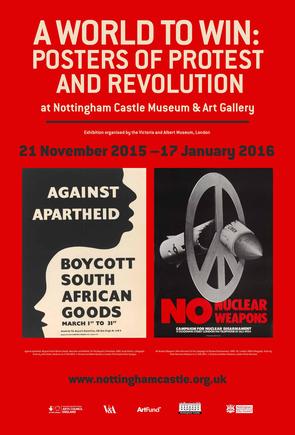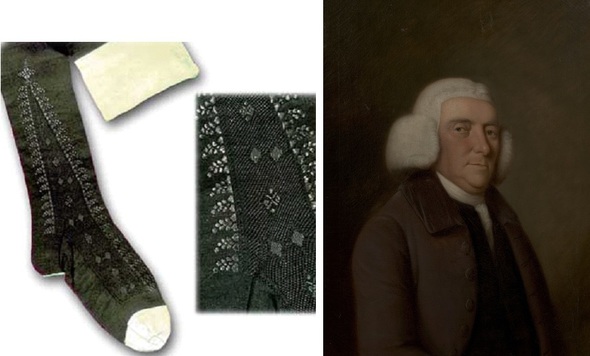 A World to Win exhibition
Until 17 January 2016
A V&A touring exhibition
As we work on plans to showcase Nottingham’s history of rebellion, it is fitting that this touring exhibition on the theme of rebellion is currently on show at the Castle.
For many social and political movements, poster production continues to be an important form of cultural output.
Some visualise the destruction of the old order, others present a utopian vision of the future. There are posters that scream resistance while others are images of empowerment.
A series of talks and lectures accompany this exhibition. For more information please visit the exhibition website
|
Object of the month - Hearson's last letter
George ‘Curly’ Hearson (1810-32) was executed on the steps
of the Shire Hall in Nottingham on 1 February 1832 for his part in the
Nottingham Reform Bill Riots of October 1831. This letter, from Hearson to his
wife and mother, offers the equivalent of his last will and testament.
Hearson,
who was a bobbin and carriage maker, had acquired local celebrity as a boxer.
He was tried and convicted for his part in the attack on Colwick Hall and
Lowe’s Silk Mill in Beeston. It was suggested, but never proved, that Hearson
was also a ringleader during the burning of Nottingham Castle.
Hearson’s sense
of injustice is evoked in his final statement that he died ‘a murdered man’. After
his execution, his brother Thomas, a respected lace agent, provided a Wesleyan funeral
and a procession watched by thousands of spectators.
The publication of
Hearson’s final letter in the local press turned it from a piece of private
testimony into a powerful emotional comment on recent events.
Thank you to Richard Gaunt, Associate Professor in Modern History at the University of Nottingham for information on this month's object.
Richard is in a three-year residency with Nottingham Castle Museums and Galleries as Curator of Rebellion and Social Justice, working part-time with the castle’s established curators to help develop the new ‘Rebellion Gallery’, which is at the heart of the castle transformation. The post has been funded by Arts Council England.
 Hearson's last letter
Meet people who lived at Brewhouse Yard
By Maria Erskine - Curator
of Community History and World Cultures (Brewhouse Yard)
"One of the primary interpretive techniques we plan to use at Brewhouse Yard will involve explaining the site through the real life experiences of former residents. There are three key characters who will be used, each from a different time period, who will share details of their domestic and working lives with visitors. The first is William Elliott:"
William Elliott (1707-1792) - Eighteenth Century resident
William Elliott is first recorded as living at Brewhouse Yard in 1732. Initially he is referred to as a stocking trimmer, meaning he employed others to embellish hosiery. At the same time he hired several others to work stocking frames from his premises at Brewhouse.
He then moved into cloth dyeing, harnessing the water supply of the nearby River Leen and the well in his yard. Eighteenth century men preferred to wear black silk stockings as they were more flattering, but it was difficult with vegetable dyes to achieve a pure black. After much experiment, Elliott achieved a superior black and won practically all the dyeing business of both Nottingham and Leicester. He kept his discovery a secret, but did pass the formula on to two nephews, who became his apprentices.
His entrepreneurial spirit made him one of the richest men in Nottingham. He moved to a large house on Beastmarket Hill in 1765, but he and his family continued to play an important role on the site. He grew his business over the following years, expanding into silk, and becoming a major investor in local property. He died in 1792, leaving a large estate to his family and bequeathing money to good causes.
Associated images – William Elliott, English School, c.1770, accession number NCMG 2002-13. Also black silk stockings, 1785-1800, accession number NCM 1985-770/15.
 William Elliott and his black stockings
|